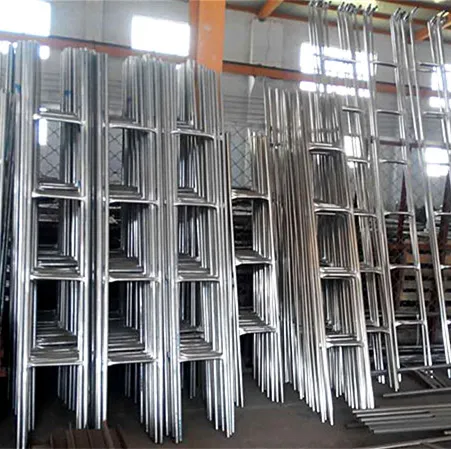loading...
- No. 9, Xingyuan South Street, Dongwaihuan Road, Zaoqiang County, Hengshui, Hebei, China
- admin@zjcomposites.com
- +86 15097380338
- Welcome to visit our website!
fiberglass reinforced plastic grating
Understanding Fiberglass Reinforced Plastic Grating Applications and Benefits
Fiberglass Reinforced Plastic (FRP) grating is a versatile and durable material that has gained widespread acceptance in various industries due to its unique properties. Comprising a matrix of plastic reinforced with fiberglass strands, this grating combines the lightweight characteristics of plastic with the strength and rigidity provided by fiberglass. In this article, we will delve into the applications, advantages, and considerations associated with FRP grating.
What is FRP Grating?
Fiberglass Reinforced Plastic grating is manufactured through a process where fiberglass is embedded in a thermosetting resin, typically polyester or vinyl ester. This combination creates a composite material that is resistant to corrosion, impact, and wear. The resulting grating is available in various shapes, sizes, and load-bearing capacities, making it suitable for a wide range of applications, from industrial to commercial settings.
Applications of FRP Grating
1. Industrial Facilities FRP grating is widely used in industrial settings, particularly in areas where chemical exposure is a concern. It is resistant to a variety of chemicals, including acids, alkalis, and solvents, making it an ideal choice for manufacturing plants, wastewater treatment facilities, and oil refineries.
2. Marine Environments The marine industry benefits significantly from FRP grating since it withstands harsh saltwater conditions. It is commonly utilized in piers, docks, and other maritime structures where durability and safety are paramount.
3. Stadiums and Arenas FRP grating is also finding its way into the design of public venues. Its lightweight nature allows for easy installation of walkways, bleachers, and viewing platforms, without compromising structural integrity or safety.
4. Public Infrastructure Municipal applications include bridges, walkways, and platforms in parks and recreational areas. The anti-slip surface of FRP grating ensures safety for pedestrians, especially in wet conditions.
5. Food Processing Industry The food sector requires stringent hygiene standards. FRP grating is non-porous, which makes it easy to clean and resistant to bacterial growth, making it a fitting option for kitchens, processing plants, and storage facilities.
fiberglass reinforced plastic grating

Benefits of FRP Grating
1. Corrosion Resistance One of the standout features of FRP grating is its resistance to corrosion. In environments where traditional materials like steel would corrode, FRP remains unaffected, thereby extending its service life and reducing maintenance costs.
2. Lightweight Unlike metal grating, FRP is significantly lighter, which simplifies shipping and installation. This lightweight nature does not compromise its load-bearing capabilities, making it an efficient choice for various applications.
3. Safety The surface of FRP grating can be manufactured with anti-slip features, reducing the risk of slips and falls, particularly in wet or oily environments.
4. Customizability FRP grating is available in numerous colors and styles. This allows for customization to meet specific aesthetic and functional requirements. It can also be cut to size on-site, making it accommodating for unique spaces.
5. Sustainability As industries increasingly prioritize sustainability, FRP grating presents an eco-friendly option. Made from recyclable materials, and often manufactured with energy-efficient processes, it becomes an attractive choice for environmentally conscious projects.
Considerations When Choosing FRP Grating
While FRP grating offers numerous advantages, there are some considerations to keep in mind. First, it may have a higher upfront cost compared to traditional materials. However, the long-term savings from reduced maintenance and replacement costs often justify the initial investment. Secondly, it is important to select the correct type of FRP grating for specific applications based on load requirements, environmental conditions, and regulatory standards.
Conclusion
Fiberglass Reinforced Plastic grating stands out as a robust, versatile, and reliable material for numerous applications across various industries. Its resistance to corrosion, lightweight properties, safety features, and potential for customization make it an ideal choice for modern construction and infrastructure needs. As technology continues to evolve, the applications and benefits of FRP grating are expected to expand, solidifying its place as a valuable resource in engineering and design. Ultimately, understanding the unique characteristics of FRP can help stakeholders make informed decisions that enhance safety, efficiency, and sustainability in their projects.
-
GRP Structures: The Future of Lightweight, High-Performance EngineeringNewsJun.20,2025
-
FRP Water Tank: High-Performance Storage for Corrosive and Clean Water SystemsNewsJun.20,2025
-
FRP Square Tube: The New Industry Standard for Chemical and Structural ApplicationsNewsJun.20,2025
-
FRP Pultruded Profiles: The Ultimate Choice for Lightweight Structural StrengthNewsJun.20,2025
-
FRP Handrails: The Safer, Smarter, and Stronger Choice for Modern InfrastructureNewsJun.20,2025
-
FRP Grating: The Smart Solution for Durable, Lightweight Industrial FlooringNewsJun.20,2025
-
Why Choose a Galvanized Water Tank for Your Storage NeedsNewsMay.21,2025
